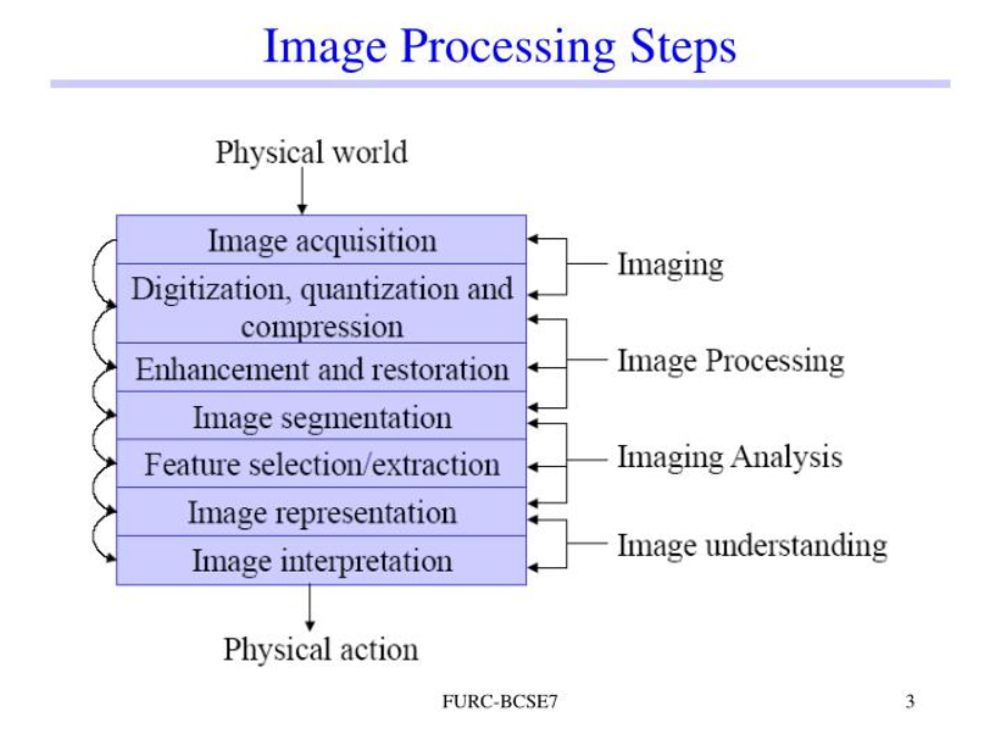

An image represents the number of pixels whose dimension is in the form of height(row) x width(column). The image has a distinct shade, opaqueness, or color which is made of the points on images called pixels. Some of the types and image representations are - grayscale, RGB, and RGBA.
A fixed sequence of operations is performed at each pixel of an image with the help of image processing. Digital Image processing is a type of technique that deals with transforming digital images with the help of computer algorithms. It is the process of changing an image into a digital form and performing specific operations to regain useful data.
Digital images are depicted as 2D or 3D matrices by a computer system, each value of the matrix or pixel denotes the amplitude which is called the intensity of the pixel. Generally, 8-bit images are used, where the amplitude value ranges from 0 to 255.

The above image illustrates the image processing steps:
Image processing has been progressing for many decades. Future advancement in this field mostly consists of satellite imaging and military applications in image processing. Other advancements in the image processing field are broadband devices and mobile technology that will lead to progress in the field of handheld gadgets.
Digital image processing is an important preprocessing phase that is mainly used for image compression, face recognition, and object detection. Image processing has many applications like object detection, recognition, color processing, pattern recognition, etc.
Some of the prominent applications of image processing systems include smart farming, the gaming industry, the healthcare industry, social networks, the assembly process of car industries, medical data analysis, and many more.
It has enhanced images for easier human interpretation. For machine interpretation purposes, the data can be extracted and processed. The pixel of any image can be transformed to any desired contrast and density. It is simple to keep and recover images, it also helps simple electronic image transmission to third-party suppliers.
It has changed many technologies and is transforming industries related to robotics, artificial intelligence, machine learning, computer vision, etc. There has been vast development and assistance in areas like real - estate, marketing, entertainment, surveillance, etc.
Lastly, the future of image processing will spread the framework for new technologies and also have a significant impact on company models and tech organizations.
Thank you for reading my today's blog. Do like, share my blogs, and comment as well. Have a pleasant day!










